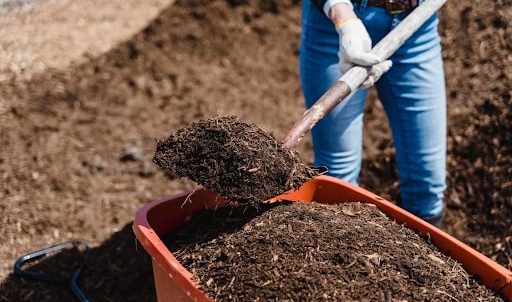A compost pile that sits neglected can easily become dormant, but don’t you worry! It’s possible to bring one back to life. If you love growing produce in fertile soil like you’re running your own organic farmers market, these tips will help you get your compost pile going again.
Learn more about organic options
Diagnose the Problem
First, you need to figure out what the problem is. Compost piles can go dormant for two main reasons. Sometimes they get too dry, and other times they get too wet.
A dry compost pile needs water. Start incorporating some water into it as you flip and turn the pile. If it’s too wet, you’ll notice a rotten egg odor and big chunks of wet material. This compost pile is just as useless as a pile that’s too dry, so you need to keep turning it to introduce more oxygen.
Nitrogen Sources Can Jump Start It
If you want to speed up the process and get this compost pile going quickly, you can add in some sources of nitrogen. Grass clippings are generally a good addition, but vegetable scraps, dried leaves, and dried plants can also help your pile grow.
Just try to keep a balance of “greens and browns.” You usually want 60 percent greens, like grass, and 40 percent browns, like leaf litter. This will help balance out the moisture levels and create more nutrient-rich soil.
Keep Food Scraps Small
If you decide to add food scraps to your pile, keep them small. This makes them easier to break down and can speed up the process. Big chunks of material can just end up taking too long to break down and could end up clumping up, especially in a compost pile that’s too wet.
Add Worms
Speaking of speeding things up, if getting nutrient-rich soil from your compost pile as quickly as possible is the goal, the humble earthworm can help. We don’t need to get too into the science behind it, but worms simply living their normal lives within your compost pile can help add nutrients to the soil so that you can give your vegetable garden a big boost sooner rather than later.
Keep Turning the Pile
Now that you have added materials and balanced the moisture level, you need to keep working on your pile. Make sure that you’re turning your compost two to three times per week. Keep your pile moist, but not soggy. Before you know it you’ll have plenty of fertile soil to use in your garden.
Give Up On Moldy Compost
Moldy compost can be spread out in the sun so that mold spores can die, but sometimes trying to revive such a pile can be more trouble than it’s worth. Know when to throw in the towel and build a new compost pile that’s ready to provide you with fertile soil.
If you want to learn more about composting, organic eating, or anything else, visit the Organic Restaurants blog! We’re full of tips that can help you live more sustainably!
Find restaurants with organic options near you
Search by city or see restaurants close to you.






 Sign in with Google
Sign in with Google Sign in with Facebook
Sign in with Facebook